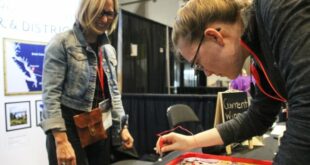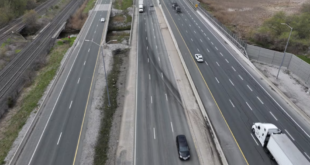Code 699 benefits remain available today for child care, isolation and other reasons.

The government department in charge of managing labour relations with federal public servants is no longer keeping track of how many employees across 75 institutions are taking time off work under a special paid leave provision made widespread during the COVID-19 pandemic.
The Treasury Board of Canada Secretariat (TBS) says it stopped collecting detailed information from the likes of Canada Revenue Agency (CRA) after seeing a dramatic drop in the leave’s usage last year, but data obtained by CBC News shows a small number of workers continued to be approved for the benefit in the months afterward.
Known by the way it’s put into the pay system, Code 699, or “other leave with pay,” became a catch-all entitlement for COVID-related leave, allowing government workers across Canada to self-isolate, care for family members, deal with IT problems and beyond without losing a paycheque.
TBS proactively disclosed statistics around Code 699 usage during the first 18 months of the pandemic. At its height, around 76,000 — more than a quarter of all federal public servants — were granted special time off.
Despite a steady decline of leave approvals by late 2021, a considerable number of employees continued to invoke the benefit.
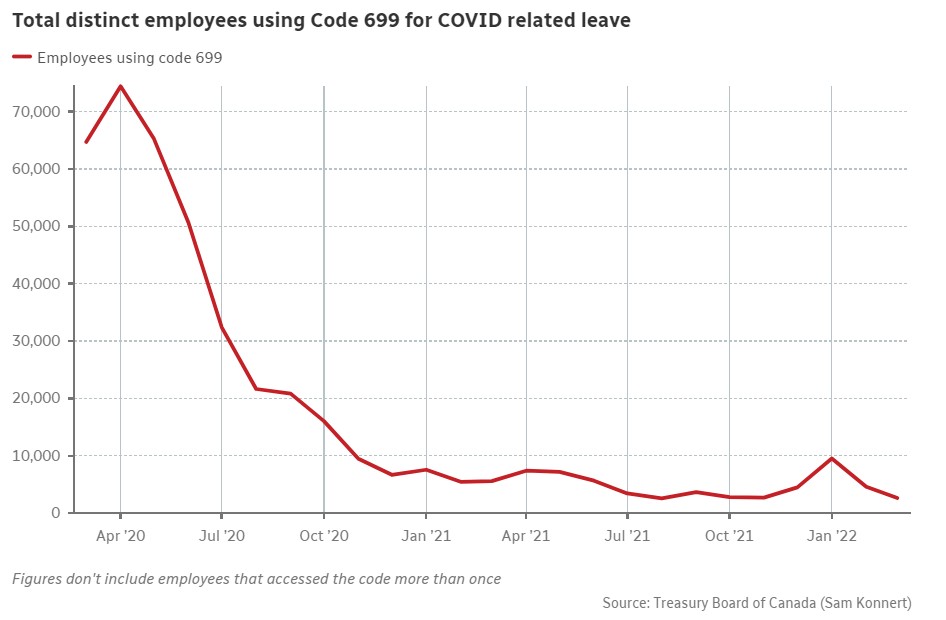
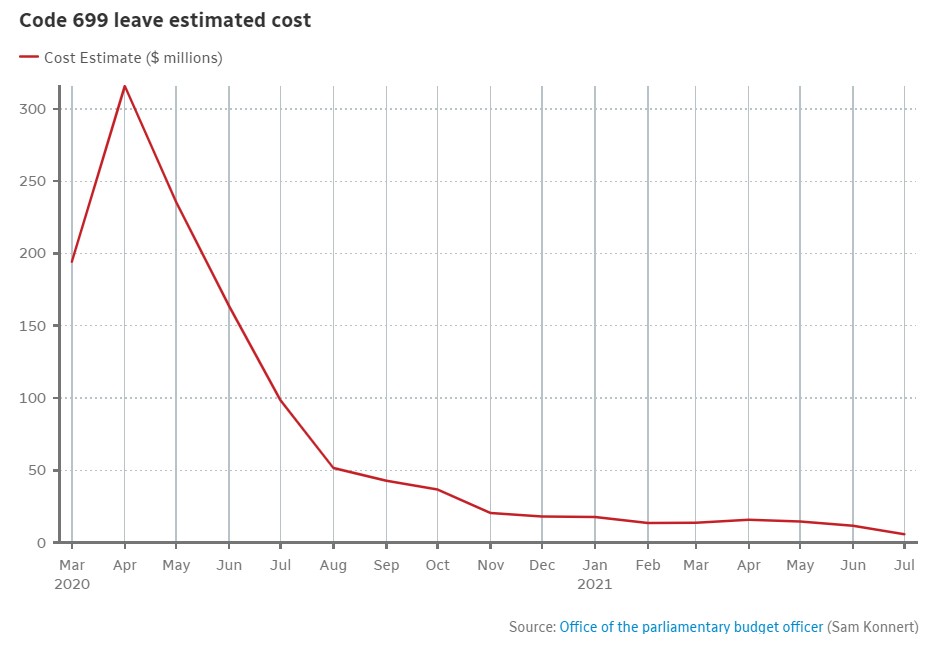
More than 16,800 employees were approved for this leave in the first three months of 2022, with the CRA (3,300), Correctional Service Canada (2,400) and Employment and Social Development Canada (1,800) topping the list, according to TBS’s last set of records before it stopped compiling the data.
Altogether, they represent a total of more than 408,000 paid hours away from work at the tail end of the pandemic.
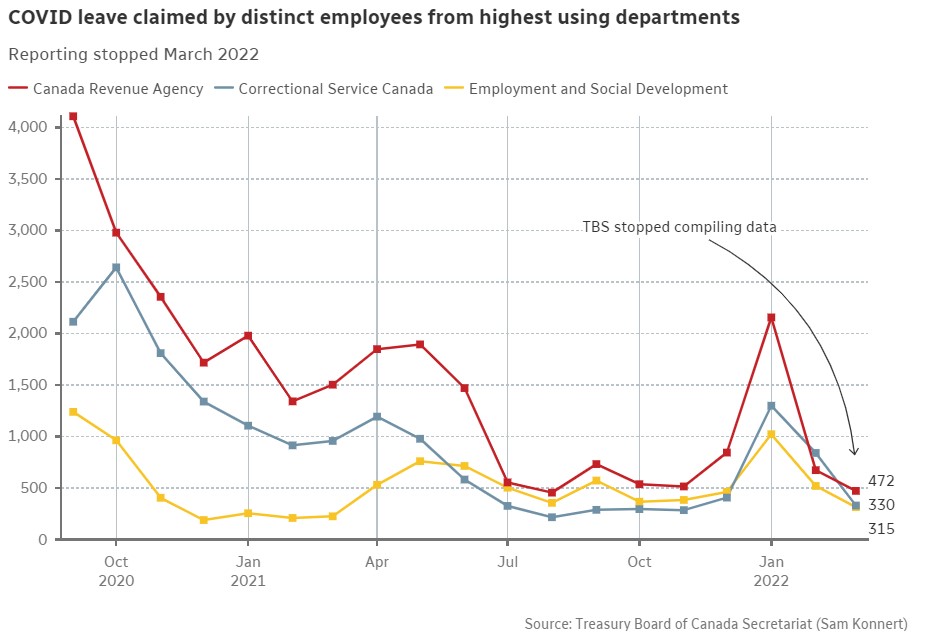
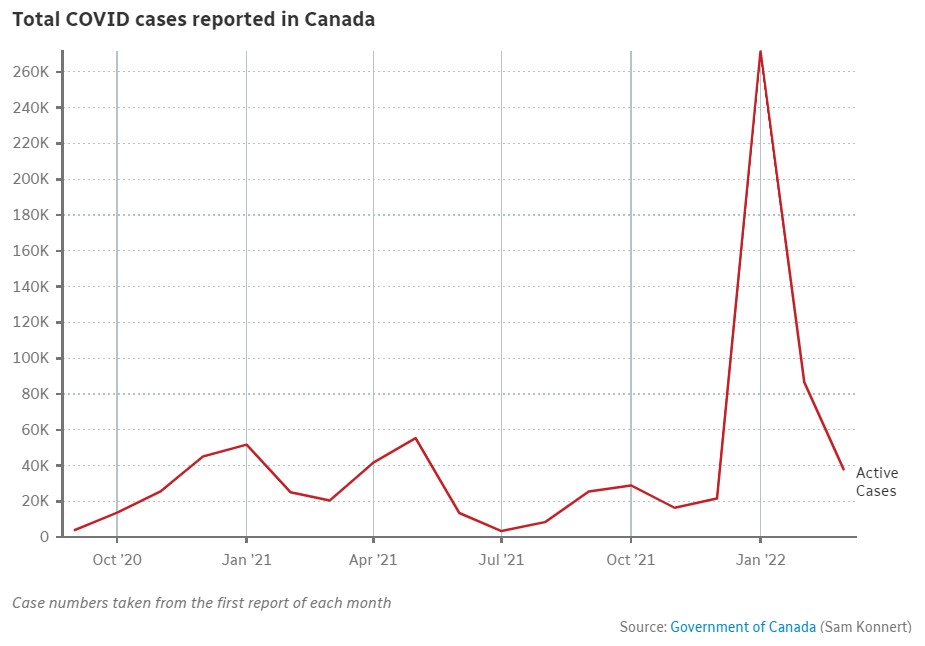
Hundreds of CRA workers kept using leave
Data obtained by CBC through an access-to-information request reveals managers at CRA continued to grant Code-699 leaves for around 400 more employees during the remainder of the year.
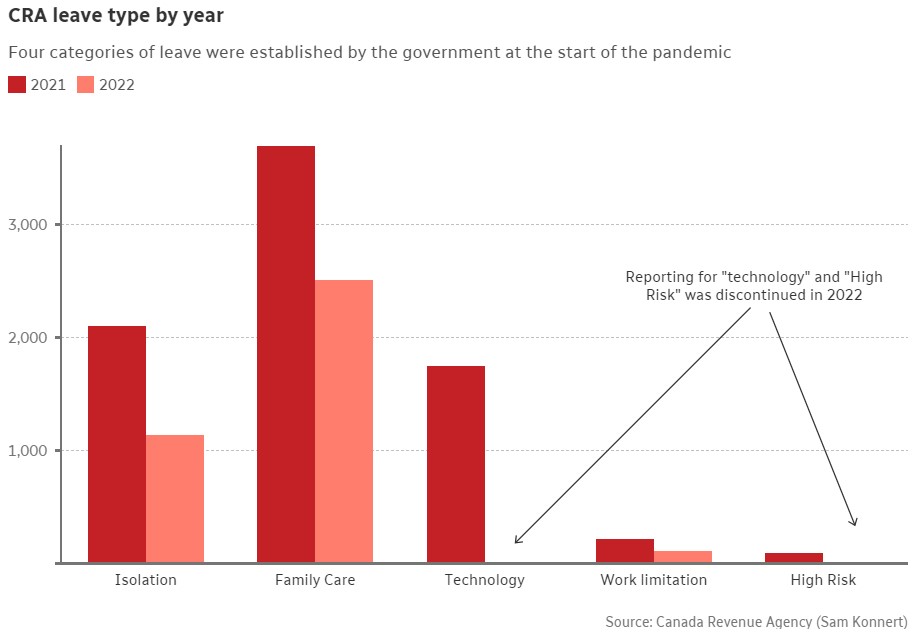
Because the TBS no longer tracks the other departments, it’s unclear how many other employees across the public service were approved for the same leave after March.
“The CRA has a long-standing culture of very accurately reflecting the use of time by its employees — and that’s not as well ingrained in other institutions,” said Parliamentary Budget Officer Yves Giroux, who had previously served as an assistant commissioner at the CRA.
“At times, I found it a bit strange to have to record my own time when I was taking training, for example, because it didn’t affect my pay and it didn’t affect the overall finances of the institution,” he said, reflecting on his time at the taxation agency from 2015 to 2018.
Giroux said the reporting of Code 699 leave has always been uneven across federal institutions, with the CRA standing out since the beginning — even after accounting for its sizable head count.
He said he was, however, surprised that more than 3,000 CRA employees took the leave in 2022.
“It’s a bit surprising to see that many employees,” Giroux said. “But 2022 was still a period early, especially in the first half of 2022 where there were COVID cases and the virus was still spreading.”
Cost of 699-leave exceeds $1 billion
The Parliamentary Budget Office, which provides independent oversight of the public purse, began analyzing the cost of the special leave in 2020 and concluded in a report that the total number of hours paid out across the public service amounted to nearly $1.3 billion over the first year and a half.
But Giroux’s analysis stopped at the end of 2021.
“Because the usage of 699 was dropping significantly,” he said.
Due to the lack of complete data for 2022, it’s impossible to peg an updated cost on the leave. The PBO has declined to comment on the government’s move to stop tracking its usage.
Union defends continual usage

The federal government did at one point attempt to rein in the use of the special leave, but those efforts were thwarted by a barrage of union-backed grievances.
In May 2020, the TBS revised its guidelines to restrict the use of Code 699 for child-care needs when schools and child-care centres started reopening. The government wanted employees to exhaust other types of entitlements — including sick leave, family-related leave and vacation leave — first.
The Public Service Alliance of Canada (PSAC) swiftly intervened, filing several grievances, arguing the restrictions were discriminatory and violated members’ collective agreements.
The fight stretched into the spring of 2022, when an arbitration board ruled it was at times unfair for managers to force workers to deplete other types of leave before dipping into Code 699 leave.
“I don’t see why we would let that benefit be taken away from the employees when it’s used appropriately and the employer has the last word,” said Marc Brière, national president of the Union of Taxation Employees, the PSAC component that represents CRA workers.
He insisted the special leave has always been used as a last resort.
“The pandemic was a game changer,” he said. “There was an extraordinary circumstance and it was more used than usual because of that.”
Brière said he understands why some in the private sector might feel resentful that public servants still have the option today to take time off with pay for COVID reasons, without affecting their sick leave bank.
“I understand that some people may not like it because they don’t have it as well,” he said. “Some people in the private sector have different conditions — sometimes better than the public service. They have a higher salary, there are different things.
“You can’t have your cake and eat it too,” Brière added. “You want this public service to be there?”
ABOUT THE AUTHOR
Falice Chin is the executive producer of news at CBC Ottawa. Before moving to the capital, she worked as the founding senior producer of the Cost of Living — CBC Radio’s national business and economics show based in Calgary. Her international work has appeared in the Financial Times, the National Post, Zacks Investment Research, mergermarket and elsewhere. falice.chin@cbc.ca
*****
Credit belongs to : www.cbc.ca
 Atin Ito First Filipino Community Newspaper in Ontario
Atin Ito First Filipino Community Newspaper in Ontario


